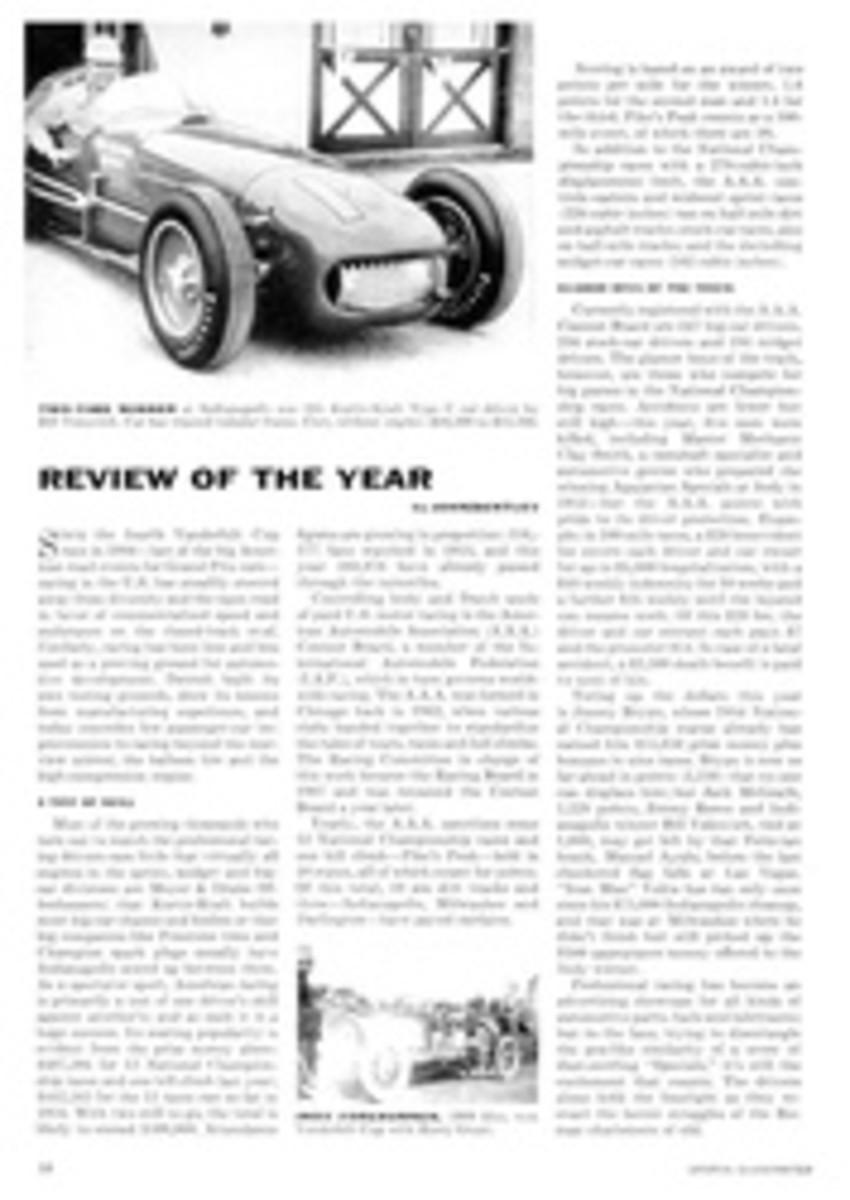
INVENTOR WITH A LAZY STREAK
SCOTIA, N.Y.
A few weeks ago, in the Pentagon, the big brass of the Ordnance Department sat around for several hours listening earnestly to an 18-year-old boy from Scotia, N.Y. The young lecturer was Herman K. Pribis Jr. and he was explaining his theories on the care and cleaning of guns. The reason the Pentagon had summoned him to Washington was that Herman had already perfected such startling improvements in this field that the Army felt they might use some.
One of them had especially caught the eye of the Pentagon planners: a collapsible cleaning rod which can be fitted inside a hole bored into the stock of the Army's M-1 Garand. It is sealed inside by a hinged butt plate which keeps it safe and ready for emergency use. It cannot touch the lands of the gun's bore. And it really works.
Herman claims he got to be an inventor because he's got a lazy streak as long as a gun barrel inside him. "So," he explains, "when I sit down to do a job I hate, I start to figure out a way to make it easy on myself."
A VERY SPECIAL AFTERNOON
Herman likes to hunt, but he hates cleaning guns. On this very special afternoon when his work-hating turned him into an inventor, he'd just come back from a squirrel foray.
He got out his cleaning rod, his patches and his oil. He rested the stock of his gun grimly on the floor and set about the dreary business of cleaning it. As he cleaned, he kept telling himself that there had to be an easier way than this to clean a gun.
This time something came of it. Perhaps his subconscious was tired of being pestered. Whatever it was, Herman's kid brothers stared in surprise as Herman suddenly jumped up.
On the double, he headed for the camp woodpile. There, he picked out some fir scraps. Then he put them together in the form of a crude cradle—a thing that wound up looking like a pint-sized sawhorse.
Herman returned to the camp with the cradle. He placed his half-cleaned gun on it as though it were a log about to be sawed into stove-size lengths. And he discovered that he finished the cleaning job in a way that was better both for the gun and for himself.
That was 1952. Today he's the full-fledged president of the Benson Sporting Goods Manufacturing Co., Inc. (so named because the family camp is on Benson Road). It's a profit-making concern with six stockholders, a workshop (converted garage at home), proving grounds at the camp and a sales office in Scotia.
Inventing something, Herman soon found out, isn't as tough as doing something about it. First of all, he saw that after using the gun-rest, it was too bulky. Herman's kid brother Rudy had an idea. He spoke up: "We could fix that, Herm. We'll get a hinge, stick it to the middle and then we can fold it into half the size."
"LIKE A SHOE BOX"
Herman knew they had something. With the help of the hinge they could fold it into the shape of a box. After a few weeks, Paul, the 7-year-old, said: "You know, Herm, as long as it folds into a box, why not put a groove in it so you can put the bottles of oil and stuff inside it. Like a shoe box."
Herman worked this idea out and by now his homemade joker was quite a neat production in its still crude way. Herman's father, who had been a tool-maker with G.E. once, knew how to make blueprint diagrams. He made some of the kit and Herman took them to the family lawyer who sent them to a patent attorney in Washington.
The P.A. made a search of the patent office and found that gun-rest patents already in existence totaled only three—1952, 1942 and 1872. A patent, Herman found out, was issued only if your invention had at least one completely original feature to it. This one did have—exactly one: the storage space it offered after the box was folded onto a spacer track inside. With the legal green light, the Pribis boys were off.
Herman redesigned it to make it look more handsome. Then he tracked down a box company in Vermont who agreed to make the boxes. The first batch was made out of basswood.
After trying them out for a month or so, Herman saw that they got easily scratched up. As a result, he came up with the idea of putting on projecting metal corners and that kept the finish slick. He gave it a trade name: the Kleen-Tote. It's already being sold in sporting goods stores through New York State and New England.
MAKING THINGS THAT HELP
Herman is a great big guy for his age—a 6-foot, 200-pounder—who looks as though he'd make a fine, long-hitting first baseman. But he's no more interested in baseball than a Swiss watchmaker. His sport is making things that help him, and others, to hunt.
The Kleen-Tote turned out to be only the first of six patents, all tied up with guns and pistols, that Herman applied for and got. Six out of six, in the patent world, may be some kind of a record. The retail prices on Herman's products aren't cheap but the craftsmanship is all of the old school—handsome, sturdy and nonassembly line.
Whether he makes millions before he's 30 remains to be seen. But if, in the next few weeks, the Pentagon decides that the Army needs the self-storing cleaning rod (and several other Pribis inventions now under consideration) Herman will be well on his way to that first million, which is supposed to be the hardest one to get your mitts on.
PHOTO
INVENTOR PRIBIS checks his gadget while kid brothers Paul and Rudy (left) work on some other brainstorms.
ILLUSTRATION

